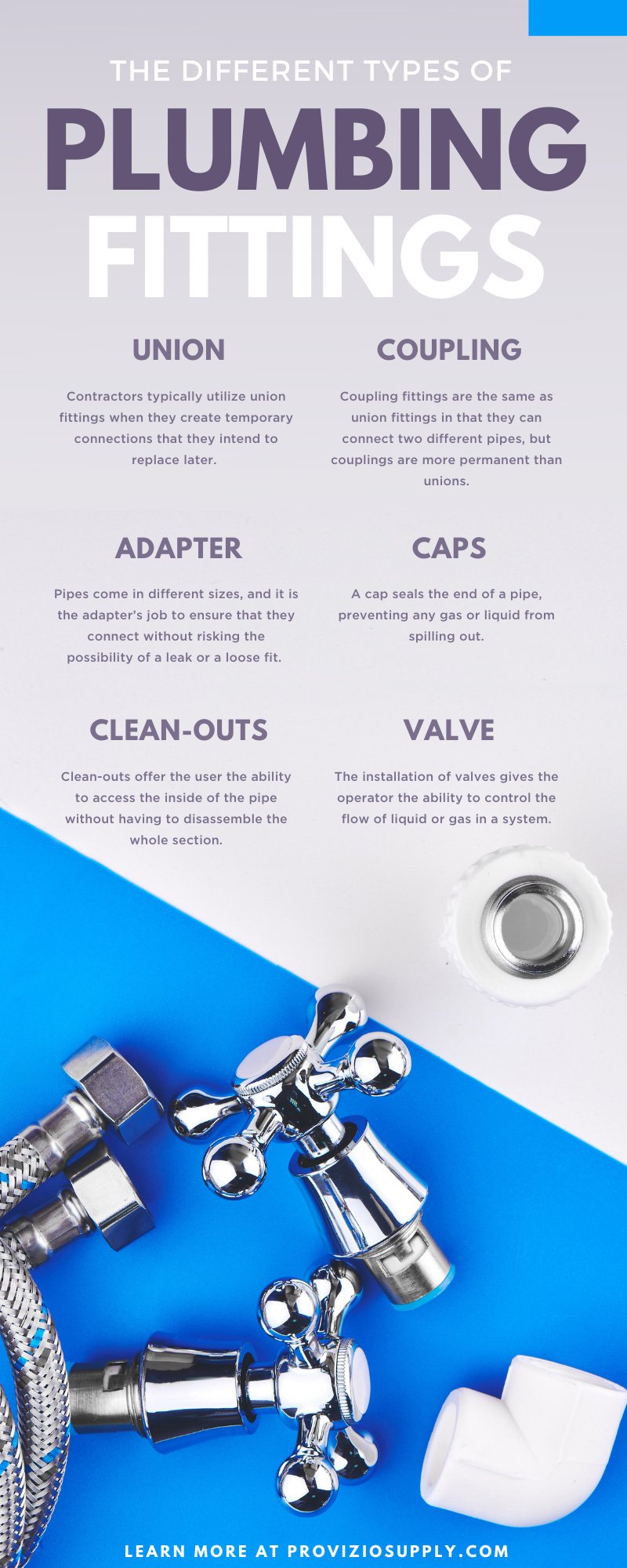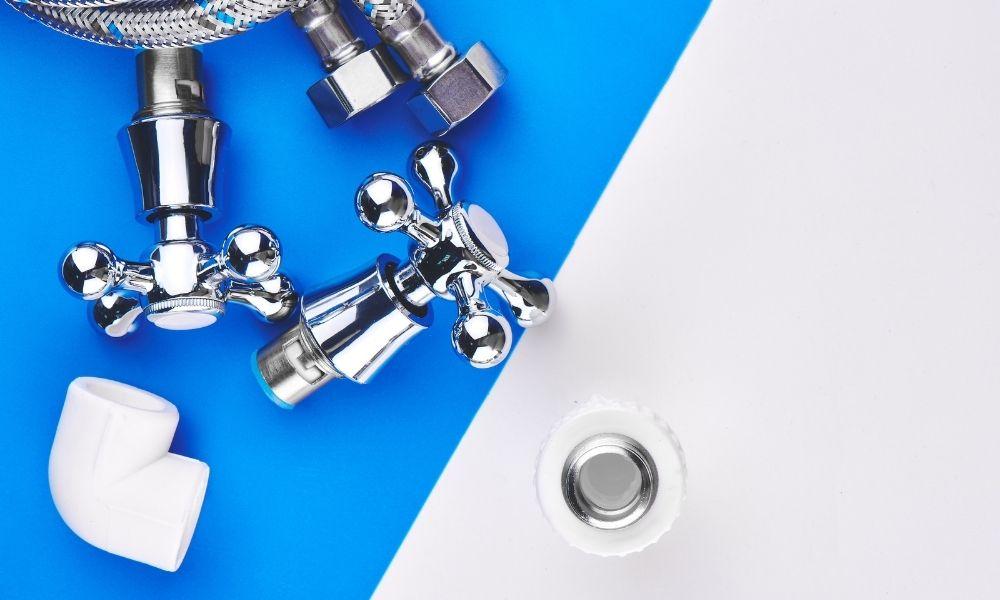Uncategorized
The Different Types of Plumbing Fittings
A home’s plumbing system contains more than straight pipes; it’s also comprised of different types of plumbing fittings that connect a multitude of pipes properly. There is no one-size-fits-all option, as a home’s plumbing system needs to utilize various tools and equipment pieces to join the entire house and ensure there are no misalignments or poor connections.
Some fittings adapt different sized pipes, while others change the flow of water to a different direction. You’re going to need to know what’s available to you to make the right decisions when you set up new plumbing in a home or need to repair any deteriorated points.
Union
Contractors typically utilize union fittings when they create temporary connections that they intend to replace later. The design of the union includes a female end, a nut, and a male end. Because they are temporary connections, they are easy to install and remove when the need arises.
Coupling
Coupling fittings are the same as union fittings in that they can connect two different pipes, but couplings are more permanent than unions. Attempting to remove a coupling can result in damage to the connected pipes, requiring further maintenance.
Adapter
Pipes come in different sizes, and it is the adapter’s job to ensure that they connect without risking the possibility of a leak or a loose fit. Because they need to be versatile to handle multiple connections, adapters come in a few unique designs. Generally, these designs include turning a male pipe into a female, a female pipe into a male, or straight threading.
Caps
A cap seals the end of a pipe, preventing any gas or liquid from spilling out. Caps terminate a pipe when it doesn’t connect to anything else, bringing its particular system to an end. The outside of the cap can come in a few different shapes, depending on your needs. These include rectangular, square, round, and U-shaped forms.
Plugs
Plugs serve the same purpose as caps, as they terminate pipes. But instead of acting as permanent fixtures, plugs are removable so that a person can later access the pipe when needed.
Barb
You will find these fitting types to have a male end and a ridged, cone-shaped end. This is where the barb fitting gets its name. Contractors insert the barbed end into tubing for a secured connection without having to solder two pieces together. While this connection is strong, you can still pull it apart, though it will take some force to do so.
Different Barbs for Different Applications
Plumbers utilize barb fittings to transfer gas, air, and liquids. However, the material of the barb needs to change depending on what substances the pipes transfer. Typically, when transferring cold water, plumbers use plastic fittings. On the other hand, connecting hot water requires brass barbs.
Nipple
A nipple fitting connects pipes to appliances, providing them with water or gas as needed. They are among the most important fittings for this reason. Without them, appliances like stoves, ovens, and dishwashers would be useless. Nipple fittings come in five types:
- Close Nipples – Installers thread these through both ends.
- Swage Nipples – These connect two pipes of differing sizes to transfer liquid.
- Barrel Nipples – These have tapered threads at each end.
- Weld Nipples – They create strong connections capable of handling sudden pressure surges and excessive vibrations.
- Hexagon Nipples – Fittings with hexagonal centers and threaded ends on each side.
Cross
A cross is a four-way fitting that takes in liquids at one end and transfers them into its three other openings. Cross fittings can put unnecessary strain on connecting pipes due to thermal expansion. As a result, they’re more suitable for an environment that does not run the risk of extreme temperature changes. A consistently cool setting is ideal for crosses.
Wyes
Wyes have relatively odd shapes that resemble the letter y. Each one has a straight tube, with a second one coming out at a 45-degree branch. This design enables wyes to connect vertical drainpipes with horizontal ones and reduces the friction and turbulence of water as it flows.
Tees
Tee fittings are three-way pipes shaped like the letter t. Tees change the direction of the water.
Elbow
An elbow fitting is a tube that can have either a 90-degree bend or a 45-degree bend. Elbows fit onto pipes and create sharp turns where necessary to transfer the water to different locations.
Valve
The installation of valves gives the operator the ability to control the flow of liquid or gas in a system. Turning the handle of the valve one way will open the pipe to release more liquid or gas, and turning it the other way will slow down or completely stop the flow. Valves come in three distinct varieties:
- Isolation – An isolation valve temporarily disconnects a length of piping from the main system. It can either completely open or completely close.
- Throttling – A throttling valve controls the flow of liquid through a system. Turning the valve adjusts the size of the opening in the pipe, slowing or hastening the flow.
- Non-Return – Pipes with non-return valves move liquid in one direction and prevents that liquid from flowing backward.
Clean-Outs
Clean-outs offer the user the ability to access the inside of the pipe without having to disassemble the whole section. Removable pieces allow a person to get inside the pipe to clear out any clogs or other blockages.
Mechanical Sleeve
The primary use of mechanical sleeves is to connect two pipes that sit slightly misaligned. The sleeve itself is constructed out of rubber, giving it the flexibility it needs to connect pipes that do not line up.
Know What Installation Is Necessary
With the different types of plumbing fittings varying widely, it can be challenging to know what you must install and what will have no discernible benefit for your system. Choosing the appropriate fittings is critical for the home and necessary when installing home water purification solutions. If you use unsuitable fittings, they could lead to the contamination of the house’s water supply. You may also run the risk of harming all the residents in the home. Know what fittings are best in different circumstances and which ones will only lead to an increased risk of failure.


